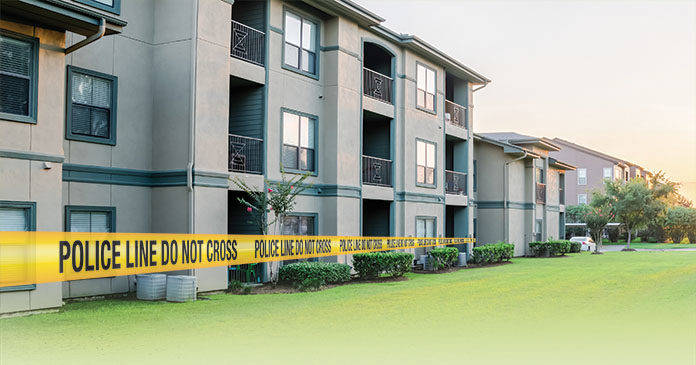How many building owners and operators are really prepared for such an event? Unfortunately, not many. Consider these steps to ensure successful resident communication during a crisis.
Build an emergency response plan
Whether it’s a fire, active shooter, earthquake or sustained power outage, the right emergency response plan will guide the property manager through any crisis event, from start to finish. Identify your unique location risks, a means to communicate with residents, commission a disaster assessment and walk through incident resolution.
Know which tasks need to be carried out and who is responsible. Top of the list—who will contact emergency responders?
Other details to formalize within your crisis planning:
- Clearly mark emergency exits and fire-safe stairwells.
- Strategically place fire extinguishers throughout the property, make certain they are clearly marked.
- Identify potential areas of refuge in the building should residents need to take cover.
- Know how to power off utilities.
- Make sure you have a secure and up-to-date list of residents’ contact information. Should residents need to evacuate, you’ll need to know how to reach them.
- Identify residents who need extra assistance, i.e. elderly or disabled and create a plan specifically getting help to them.
- Designate an outdoor evacuation area. Make sure residents and staff know it’s location. Posting this information in main building areas is key to disseminating such information to visitors.
- Consider the American Red Cross’ Ready Rating program, a free service that helps organizations prepare for crisis and provides access to tools, resources and evaluation materials.
When residents move in, provide a copy of your emergency response plan as part of their resident handbook. Consider facilitating monthly training sessions for new residents.
Have scripts ready to go
Draft a script of what you’ll say to stakeholders, staff and residents during a crisis. Write a media holding statement with different scripts that can be swapped in or out depending on the scenario. Consider drafting pre-disaster communication for crises with lead time for storms or when there is a known threat
In the event of a hurricane, for example, a coastal residential community may publish updates initially every 24 hours, then every four to eight hours during the event. This information might include how to contact the management company during a power outage, what precautions should be taken ahead of time and if there was damage, what is being done about it, etc. Even when it’s bad news, residents want to know. The unknown is always worse and causes greater anxiety.
Pick a tried-and-true resident communication method
Quickly disseminating information is key. Employ multiple channels of resident communication simultaneously to ensure you’ve reached everyone.
Because residents are on different schedules, and may or may not be home during the crisis, multifamily tower and condo associations often rely on email to reach residents. This is an effective way of communicating during a crisis, assuming residents are checking their email regularly.
Many large multifamily buildings have implemented mass notification systems with SMS/text alerts. Residents sign up online to receive alerts via cell phone calls or text. This can be the best way to reach all residents in the shortest amount of time.
Should there be an active shooter, for example, text alerts allow the real time information to be disseminated on a mass scale without noise.
When there’s lead time, an effective way to communicate is to post signs in the lobby. Consider a hotline residents can call during an emergency that will give them up-to-date information. Post this number throughout the building, in the elevators, at the mailboxes, and put it in all resident communication. Residents familiar with the number are more likely to call it during a crisis, and may even have it memorized.
Finally, a public address system (PA) is effective in large buildings. It allows management to notify occupants immediately—regardless of whether they are residents or guests. Remember not to use local jargon or short-hand over the PA as visitors to the building may not be familiar with the terms.
Train everyone
Our schools have gotten good at training students in crisis response. How often do residential buildings organize a drill? In high-rise residential buildings, one person on each floor should be designated floor captain. This could be a resident volunteer from the building association, or a natural leader who can gather residents and communicate the building’s emergency status in a grass roots way.
The captain’s top job is to ensure compliance with the emergency response plan during an emergency. While there will never be a good time for everyone, consider scheduling regular drills over weekends when most residents are home and can participate. Provide ample advance notice of the drills to all residents, and depending on the size and location of your building, consider asking the local fire and police department to participate. They can advise as to the best evacuation, evaluate your emergency response plan and provide guidance on improving evacuation times based on their experience and knowledge.
Crisis management will continue to grow in importance with every high-profile event. In line with the accountability we have for those souls within our communities, property owners and operators need to focus on disaster preparedness to keep residents safe while on our watch.
Author: Chris Dunlap, VP and senior risk consultant
















